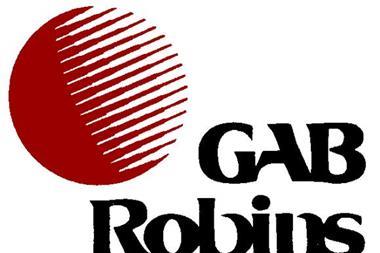From workplace noise to mortgage fraud, familiar risks are back wearing new masks as we seek to identify and manage the claims of tomorrow, says Andrew McBride
Our claims teams spend a good deal of time watching out for new and emerging risks, producing horizon-scanning analyses and commentaries reflecting their findings.
I was reviewing these recently and noted that there is a plethora of scientific research into potential risks associated with areas of concern such as carbon nano tubes, electro-magnetic fields, shift work patterns, beat knee/bursitis and diverse chemical exposures. Time will tell if these risks turn out to be real – and whether we are taking the right steps to manage them – or whether it will be new and unforeseen risks that emerge as the major issues of tomorrow.
While much research is available, reliable claims data on such immature risks is rare. We do, of course, have detailed claims data on past and current risks which we also analyse. Rather than a significant outbreak of new types of claim, we are seeing a trend in a number of sectors towards “re-emerging” risks: those with some history taking on new life, albeit in a new form.
For example, in the arena of employers’ liability, we see a surprising – and worrying – increase in the incidence and value of long-tail claims relating to noise-induced hearing loss, vibration-related injury, upper limb disorders and asbestos-related conditions All of these conditions are commonly associated with our industrial past. Surely these claims should be tailing off? They are not, however, and it is clear that the upward trend is real and driven by a number of diverse factors which include:
- Much more recent and ongoing exposure to noise and vibration in the workplace than had previously been supposed. Instead of unfailingly producing a safer workplace, the comprehensive regulatory frameworks we have today often produce legal trip-wires, thus generating liability by highlighting health and safety failings.
- Technology changes meaning that, whereas noise was (and still is) a problem in industry and manufacturing, it is now more prevalent in the construction industry – and may soon be a feature of the entertainment sector.
- The problem of evidence. Employers can have real difficulty in creating, archiving and later producing records to enable them to prove that proper control regimes had been in place. Even those employers who may not be in breach of duty can be drawn into expensive long-tail claims where an employee has suffered exposure with other employers and a scatter-gun approach is taken to allegations of exposure.
- Increasing claims take-up rates. A greater proportion of those exposed are making claims, often prompted by claims farming activities.
- Higher claims spend per case, due not to higher damages but to much higher legal costs, especially tariff success fees and more widespread use of after-the-event insurance.
- Subtle shifts in the law and the burden of proof in relation to causation which have improved claimants’ prospects of success in some instances.
Of course, the phenomenon of re-emerging risks is not unique to employers’ liability. Two or three years ago, professional indemnity insurers with solicitor clients spotted the re-emergence of mortgage fraud – last seen as a major issue in the early 1990s.
Directors’ and officers’ insurers are today wrestling with the sort of shareholder class actions previously experienced following the collapse of the dotcom boom and the downturn in the telecoms sector over the past decade.
Theft of car stereo systems was a major problem for motor insurers in the 1980s and 1990s. It was largely engineered out of existence. Now motor insurers face essentially the same problem of speculative breaking and entering as thieves look for sat nav systems and iPods.
Credit-crunch-related increases in insurance fraud and crimes against property have been well publicised in recent weeks.
What does all this mean for us?
Insurers are waking up to these examples of re-emerging risks. These are current issues in relation to reserving, risk selection, pricing and risk management.
Brokers need to be aware of this and should advocate not just better risk management and health and safety governance to their clients, but also more effective document- and record-keeping, so that 20 or 30 years into the future their clients can prove what they are doing today to control exposure.
Insurers also need to gear up their claims management expertise. Claims skills that were core 15 years ago are in demand once more. Managing claims and containing costs is essential for insurers.
While it is essential to identify new risks, we must not forget to look at the trends of the past.
Postscript
Andrew McBride is claims director of QBE European Operations




































No comments yet